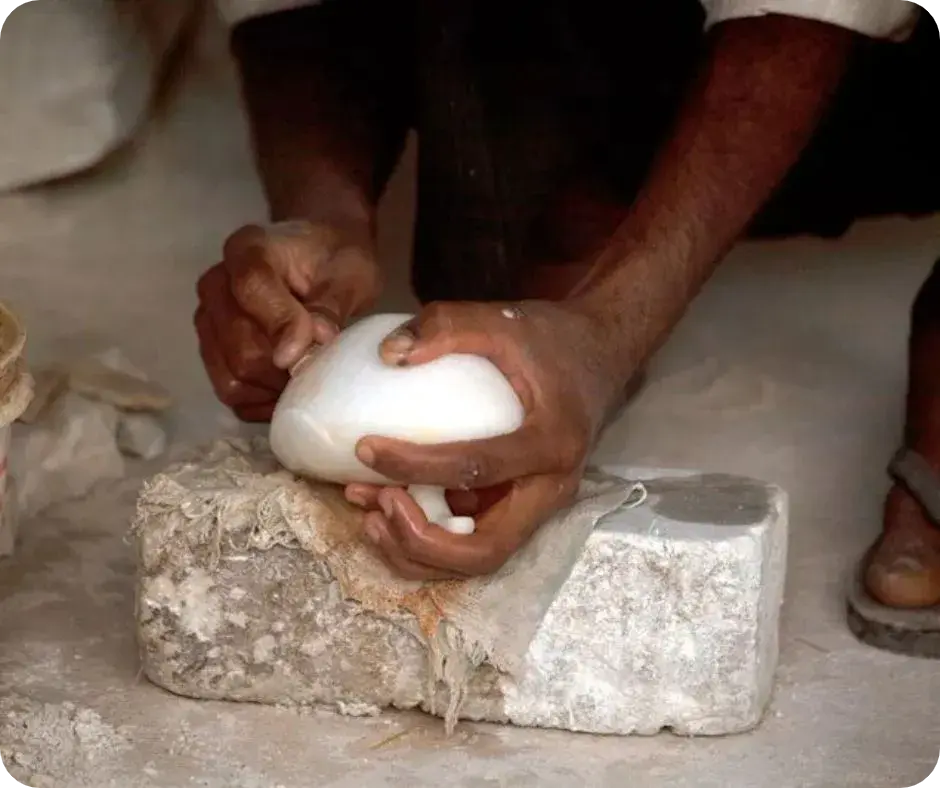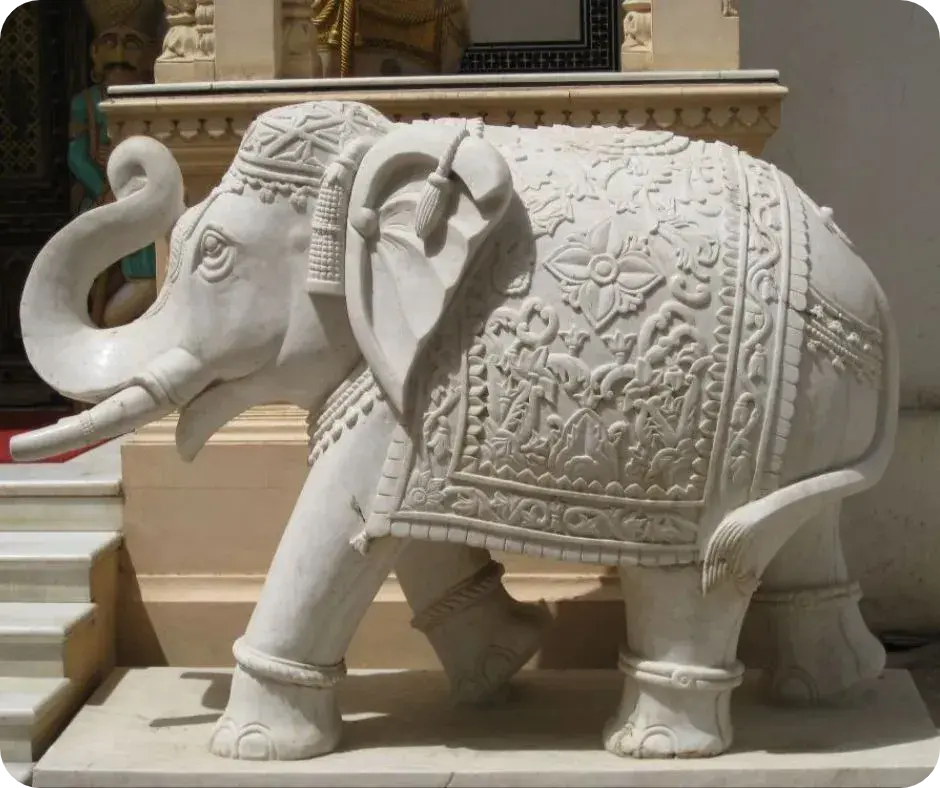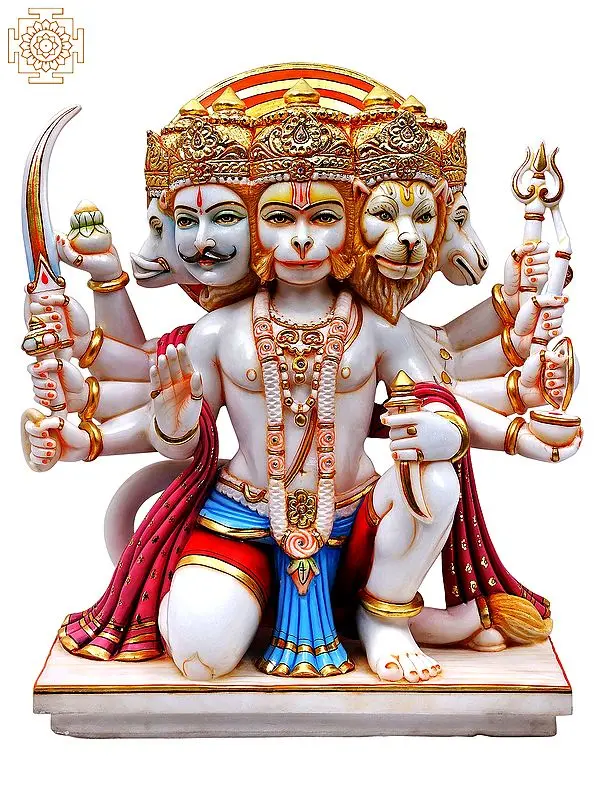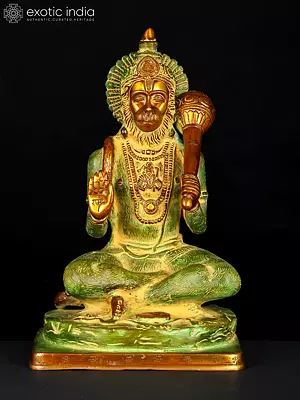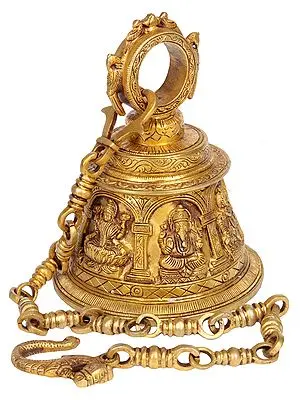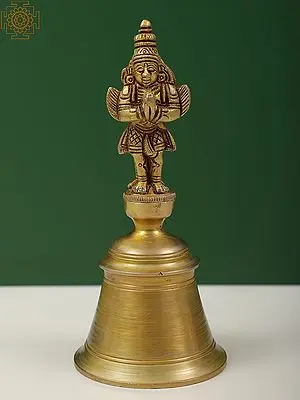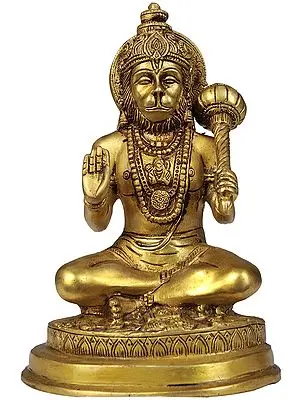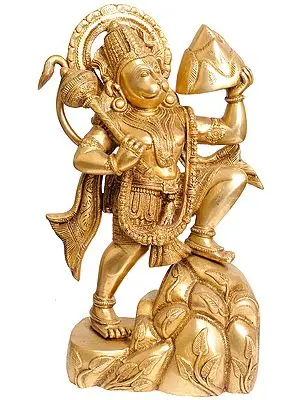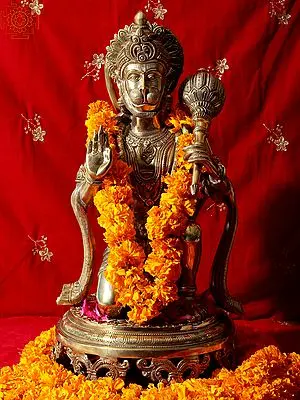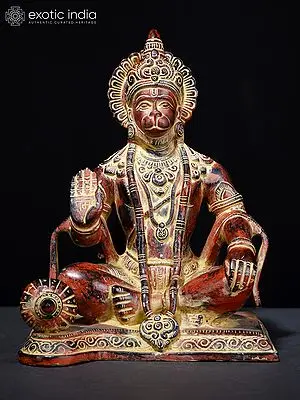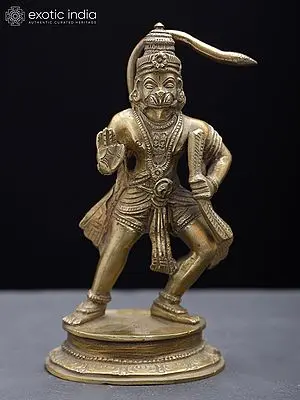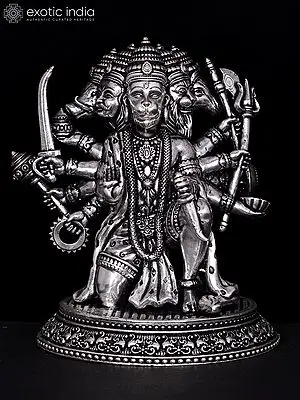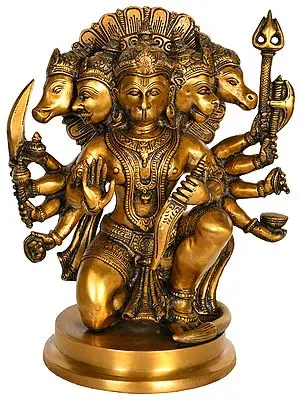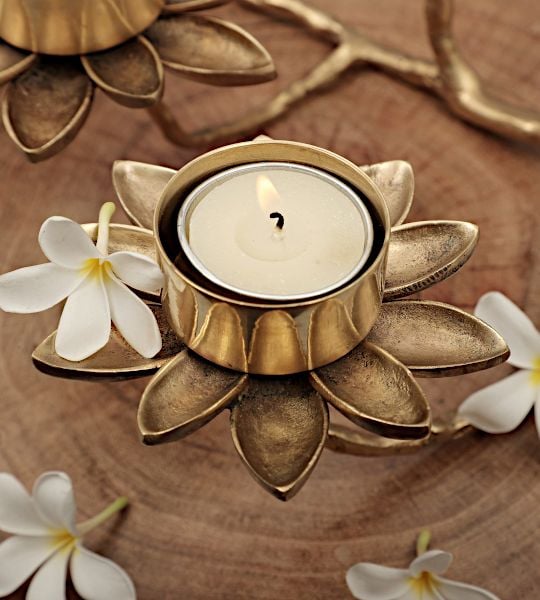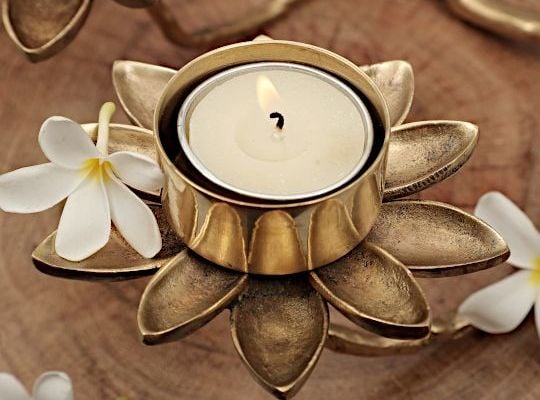25" Superfine Panchamukhi Hanuman Granting Us Abhaya | White Marble | Handmade | Made In India
Panchamukhi Hanuman's avatar is believed to be one of the gigantic (Virat) forms of Lord Hanuman. The majestic faces of Lord Anjaneya face different directions and each of the face belongs to five different gods. In Ramayana, Ahiravana, the chief of Patala (netherworld) disguised as Vibhishana and kidnapped Lord Rama and Lakshman. Lord Hanuman learned that the soul of this demon rested in the five candles, so to extinguish those five candles, Hauman took Panchmukhi's roop with each face in a different direction and together all the faces blew those candles, hence destroying Ahiravana and saving Lord Rama and Lakshman from his custody.
| Specifications |
| ZEO995 | |
|
WHITE MARBLE STATUE
| |
| Height: 25 inch | |
| Width: 21 inch | |
| Depth: 8.5 inch | |
| Weight: 65.20 kg |
| Delivery and Return Policies |
| Returns and Exchanges accepted with 7 days | |
| Free Delivery |
This superfine marble sculpture of Panchmukhi Hanuman beautifully depicts the actual form of Hanuman with the center face positioned eastwards as that of Lord Hanuman himself. It is said that worshipping Hanuman can get a person rid of all the sins and achieve success, purity, happiness, and peace in life. The lion face of Lord Narasimha (Vishnu avatar) faces southwards, carved here in a perfect face cut circumference with golden-hued hair; worshipping him is a way to achieve victory and fearlessness. The one towards the right of Hanuman's faces in this sculpture is that of Lord Garuda, looking towards the west; offering protection from negative influences, black magic, and evil spirits. One next to Garuda is that of Lord Adivaraha (boar manifestation), who faces north and removes the bad effects of planetary movements, hence promoting wealth and prosperity. The last one in the extreme right is Lord Hayagriva (horse-faced) and looks upwards, blessing the devotees of knowledge, progeny, and liberation.
The features of all the faces are amazingly carved in apt expressions and the Panchmukhi Hanuman sculpture is depicted as seated in respect on a thin marble pedestal and carries all the iconic weapons of destruction with the anterior-most right hand, postured in Abhaya mudra. Lord is adorned in marvelous gold jewels and flower garland along with the supremely gold crowned heads, forming the large divine aureole at the back. The bright color play of pink, blue and red garbs adds an eye-catchy feature to this Panchmukhi Hanuman marble sculpture.
How to clean and maintain marble statues?
Marble has been a preferred material for sculptors and artists for more than a thousand years. It is a rock that undergoes metamorphism which causes recrystallization of the original carbonate mineral grains. Marble comes in various colors, designs, and dimensions. Pure white marble is the most preferred type of marble for making sculptures and statues since time immemorial. White marble is especially used for sculpting stone monumental sculptures since ancient times. The natural shine and luster of the carbonate crystals of white marble give a lavish and beautiful appearance to the statue.
Marble stone statues are highly durable and can even withstand harsh weather conditions without getting corroded, therefore, they can be kept indoors or outdoors without getting damaged or weathered. Although these statues can last for many decades, their regular care and cleaning are essential to increase their longevity and beautiful appearance.
- The simplest and basic way of cleaning a marble stone statue is to clear away dirt accumulated on the surface. Outdoor statues are especially prone to biological growth and dirt build-up that may take away their natural beauty. You may rinse the statue with warm water and mild soap to clean the dirt as much as possible. You can use a sponge or cotton cloth to scrape off dirt accumulated in crevices and cracks.
- You must never allow water to stand on the surface of the statue for a long time. Standing water gets absorbed by the marble’s porous surface which results in its discoloration. Therefore, it is always recommended to dry-clean the statue with a towel or damp cloth.
- Applying beeswax, a non-toxic product, on the surface of the marble statue offers protection against staining, dirt, and pollutants. It also polishes the surface and gives a natural shine to the statue.
Marble statues need periodical cleaning to maintain their flawless look. However, harsh and deep cleaning can result in making the statue look dull. If your marble statue is withering away, it is recommended to take the help of a professional cleaner. Marble is a delicate material and therefore needs proper care.
Marble Mastery Unveiled: The Artisan's Symphony in Sculpting Timeless Beauty
1. Clay mould
Most sculptors prefer to sculpt a preliminary model out of clay or wax to translate its complex and intricate details into the final stone sculpture with the use of calipers or a pointing machine. The plasticity of the clay mould helps sculptors capture the success of the final sculpture before carving the stone. The clay is moulded into the desired shape or form and this acts as a rough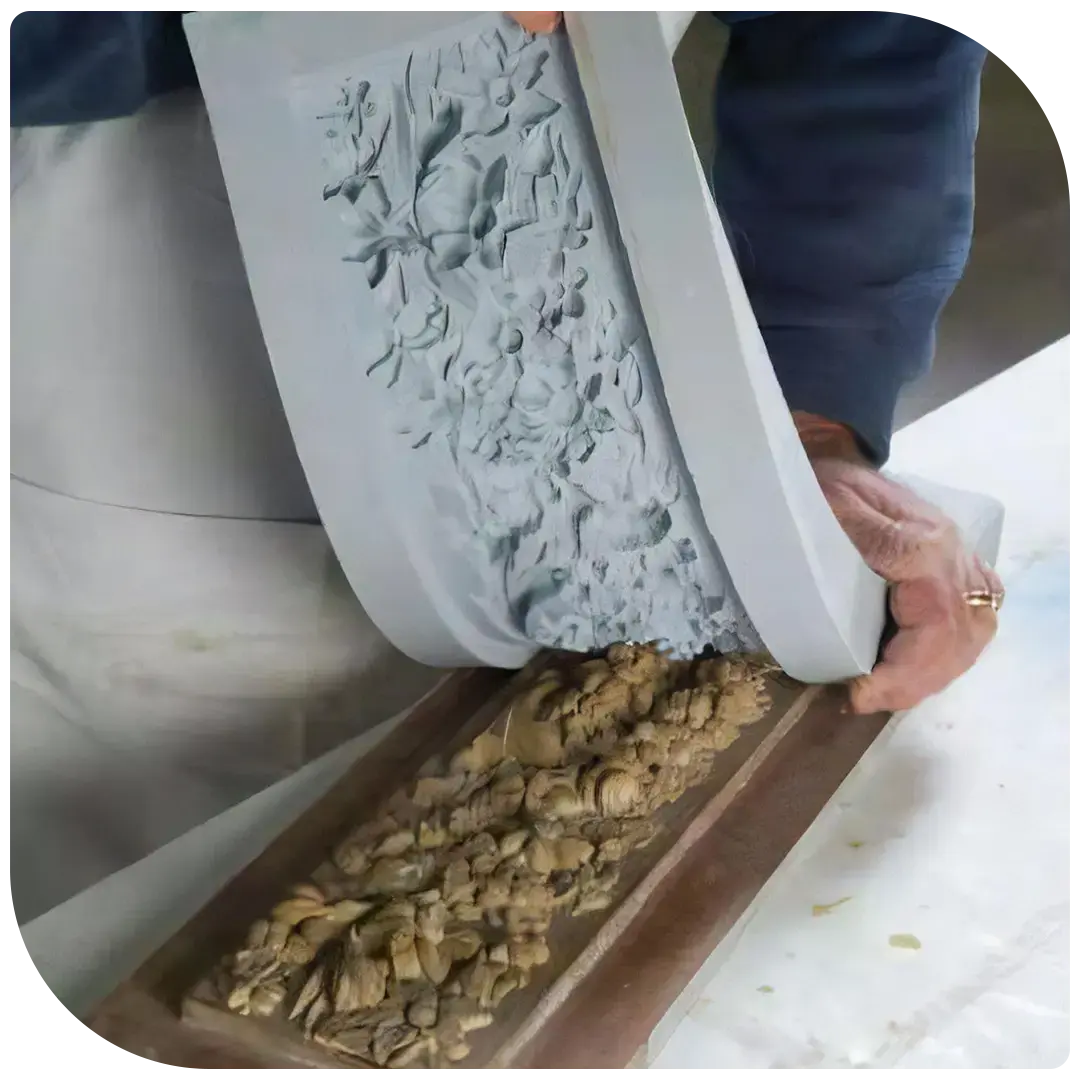
2. Roughing out
The second step of carving or sculpting is to remove large portions of unwanted marble stone. This task is done by using a special tool known as a point chisel. The pointed end of this tool is useful for splitting the large stone and removing big chunks that are not wanted. Usually, a mallet (a tool similar to a hammer) is used to transfer energy through the chisel to shatter the stone evenly and accurately.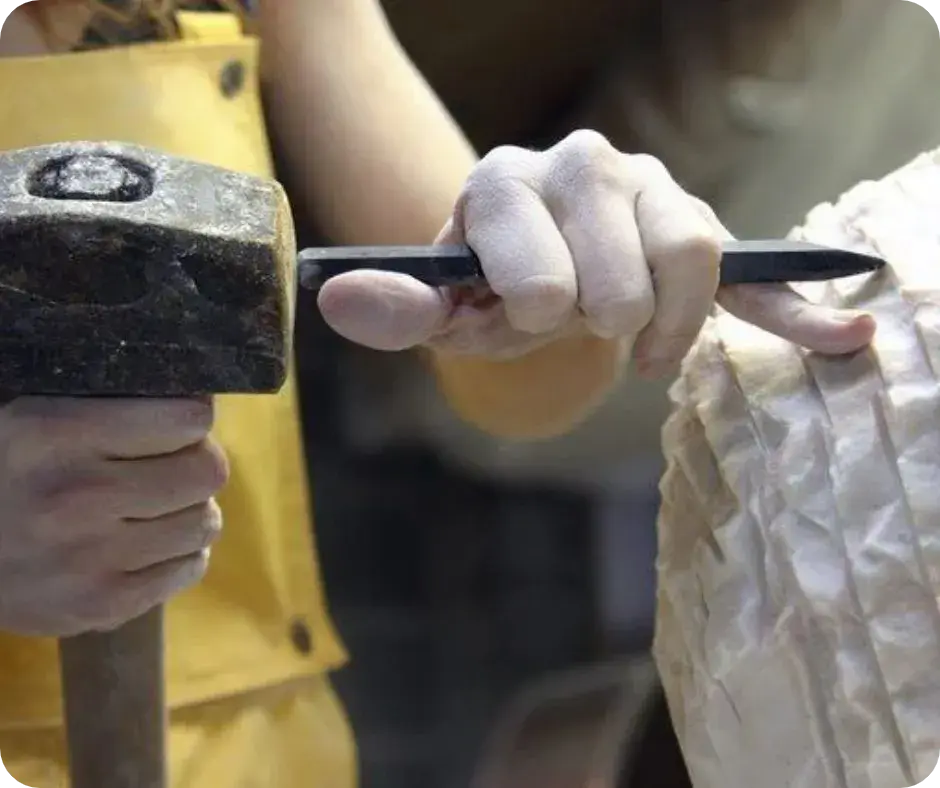
3. Refining the figure
Once the sculptors have determined the general shape of the sculpture, a toothed chisel or claw chisel is used to refine the stone. These tools create parallel lines in the stone to add texture to the figure. During this stage, the rough block of stone has now changed into the general shape of the sculpture.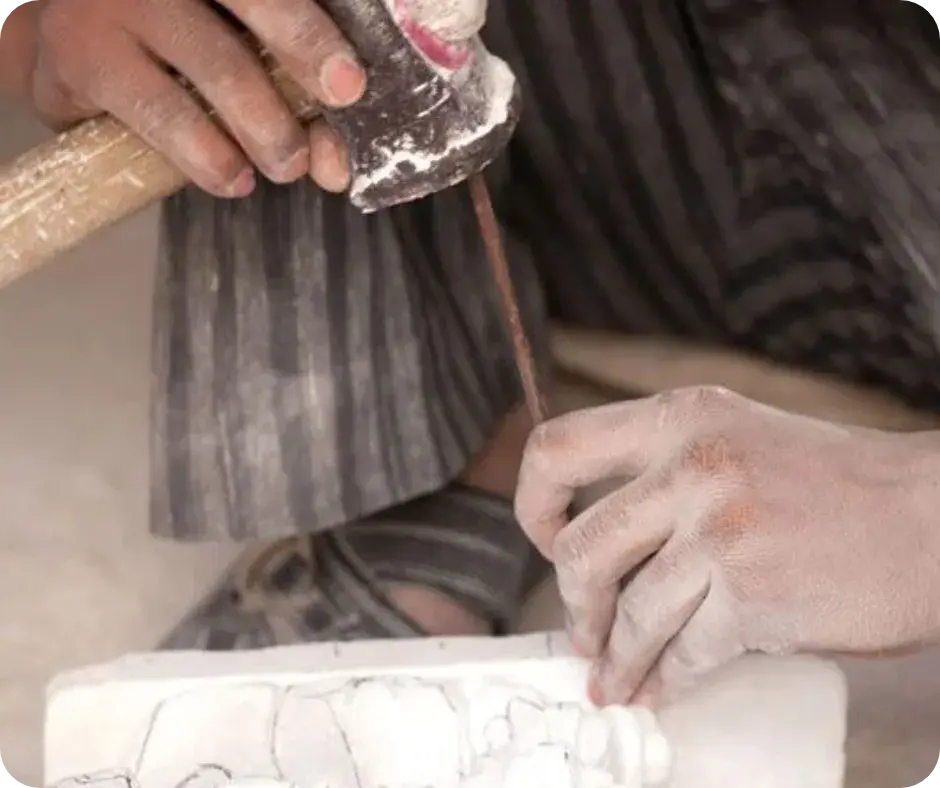
4. Adding the details
The sculptor is now ready to carry out detailed work to develop a more refined form of the sculpture. Tools such as rasps and rifflers are then used to enhance the shape into its final form. These tools finely create details such as frills or folds of clothing or locks of hair.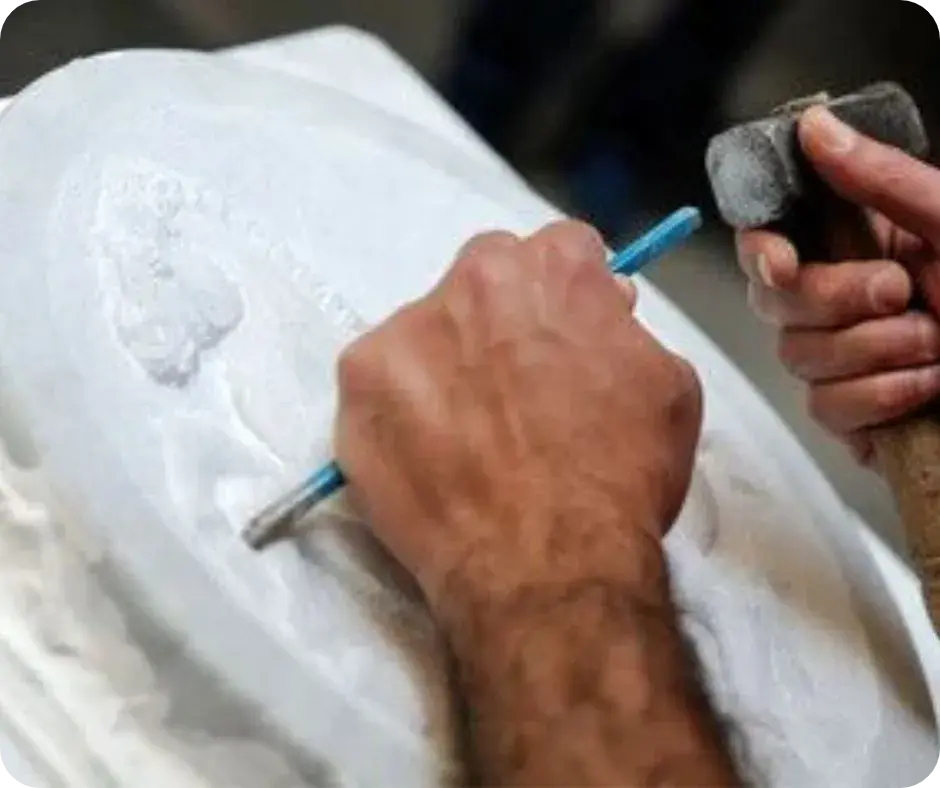
5. Polishing
This is the last step in marble sculpting in which the sculptor uses materials such as sandpaper to bring out a natural sheen to the sculpture. The sandpaper is rubbed against the surface to make it smoother and flawless. Sometimes, tin oxide is also used to make the sculpture appear glossy and more translucent.